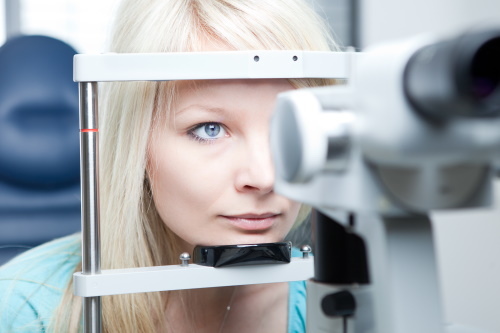
Optical Coherence Tomography (OCT) is an advanced imaging technology used to examine the retina and other structures of the eye with high precision. OCT allows you to visualize the layers of the retina in detail and is an invaluable tool for the early detection and monitoring of various eye diseases.
OCT examination of the retina
The course of the procedure:
Preparation:
No special preparation is required before the examination. But eye drops can be used to dilate the pupils.
The eye doctor or technician will ask you to place your head and jaw in a special support.
Examination:
The OCT device sends out an infrared light beam that is harmless to the eye. When this light ray hits the retina, it is reflected back.
The reflected light is collected and analyzed by the device and a detailed picture of the different layers of the retina is extracted.
During the examination, both eyes are thinned separately, and the examination for each eye lasts a few minutes.
Analysis:
The collected data creates a three-dimensional (3D) image of the retina with high precision.
The ophthalmologist evaluates these images to determine whether there is any abnormality, disease or damage to the retina.
The main diseases detected by OCT:
Age-related macular degeneration (YAMD): This disease, which results in damage to the central part of the retina, can cause vision loss, especially in older people.
Diabetic retinopathy: A disease caused by damage to blood vessels in the retina due to diabetes.
Macular Edema: Swelling caused by fluid accumulation in the central part of the retina.
Intraocular hole: A hole or tear in the retina.
Glaucoma: A disease characterized by damage to the optic nerve as a result of increased intraocular pressure.
Advantages of OCT examination:
High resolution: Enables imaging of retinal layers at the micrometer level.
Non-invasive: The examination is performed without touching the eye and without any harmful effects.
Early diagnosis: It is an ideal tool for detecting eye diseases at an early stage and starting treatment in time.
Follow-up: It is used to monitor the effectiveness of the treatment process and to monitor the progress of the disease.
OCT examination is very important for maintaining eye health and early detection of various retinal diseases. For this reason, it is recommended to perform this procedure as part of regular eye examinations, especially for those at risk.